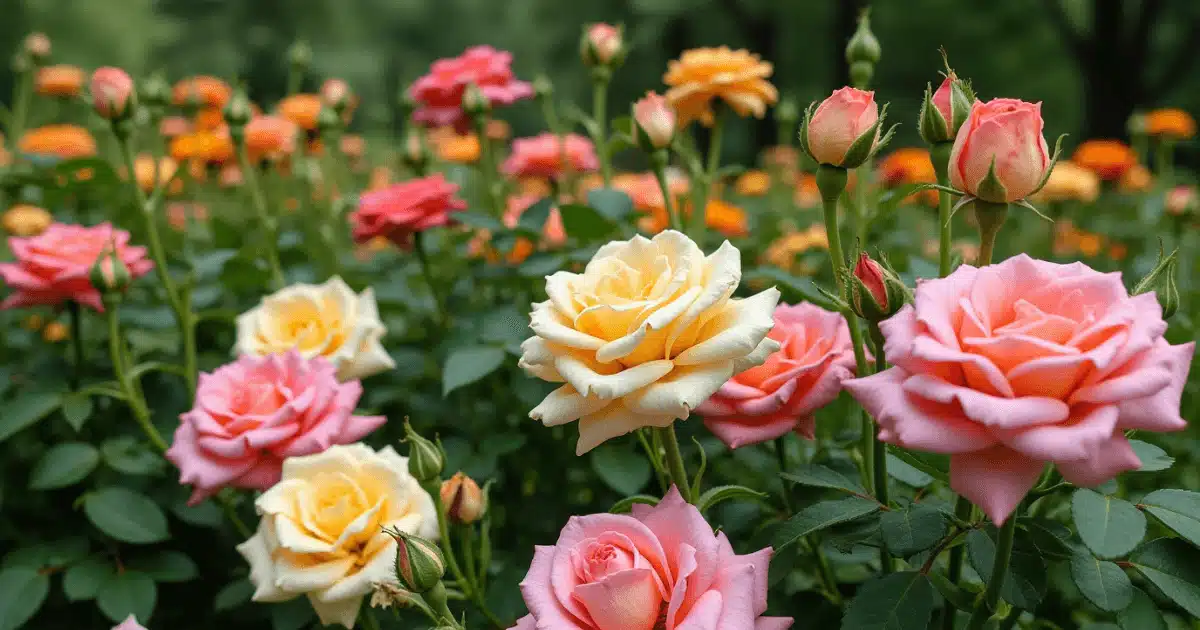8 Gardening Best Tips to Rose Bush Care
A Beginner’s Guide to Growing Roses Successfully
Introduction
Roses are one of the most cherished flowers in the world, symbolizing love, passion, and timeless beauty. Despite their reputation for being delicate, roses are surprisingly resilient and can thrive with the right care. Whether you dream of a fragrant rose garden or want to add a single bush to your backyard, understanding rose bush care is essential to maintaining healthy, vibrant blooms.
Many beginners hesitate to grow roses, thinking they require extensive effort. However, with proper soil preparation, regular watering, and basic pruning, even a novice gardener can cultivate stunning roses. From hybrid teas to climbing roses, there’s a variety for every space, climate, and skill level.
In this guide, we’ll walk you through the fundamentals of rose gardening, including choosing the right rose variety, planting, pruning, fertilizing, and protecting against pests and diseases. By following these tips, you’ll soon enjoy lush, colorful roses that bloom season after season.
Table of Contents
Why Grow Roses ?
Growing roses is not only a rewarding experience but also provides several benefits for your garden :
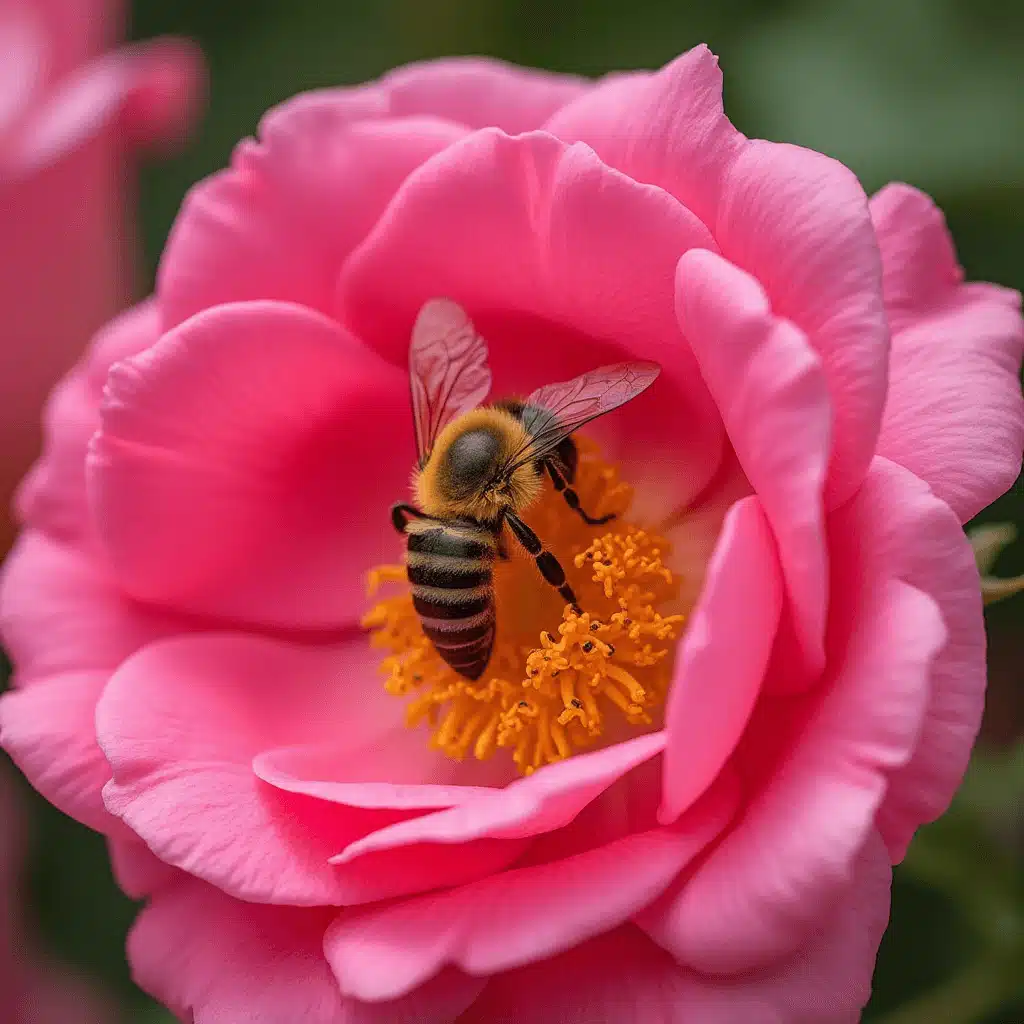
- Timeless Beauty : Roses add an elegant touch to any landscape.
- Delightful Fragrance : Many rose varieties emit a sweet, pleasant aroma.
- Attracts Pollinators : Bees, butterflies, and hummingbirds love roses.
- Therapeutic & Stress-Relieving : Gardening and tending to roses can be relaxing.
- Multiple Uses : Rose petals are used in decor, homemade skincare, and teas.
Whether you plant them in flower beds, containers, or along fences, roses bring joy and beauty to every garden.
8 Gardening Best Tips to Rose Bush Care
1. Choosing the Right Rose Variety
Not all roses are the same ! When selecting a variety, consider factors like climate, maintenance level, and space availability.
- Hybrid Tea Roses : Best for cutting, with classic, long-stemmed blooms.
- Floribunda Roses : Bloom in clusters and provide continuous flowering.
- Climbing Roses : Great for trellises, pergolas, and fences.
- Shrub Roses : Hardy, disease-resistant, and require minimal upkeep.
If you live in colder regions, look for cold-hardy roses like Rugosa or Knockout roses. For warmer climates, opt for disease-resistant varieties like Belinda’s Dream or Iceberg roses.
2. Preparing the Soil for Roses
Healthy roses start with well-prepared soil. Here’s how to create the perfect growing environment :
- Check Soil pH : Roses prefer slightly acidic soil with a pH between 6.0 and 6.5.
- Improve Drainage : Avoid waterlogged soil by planting in raised beds or adding sand to heavy clay soil.
- Enrich with Nutrients : Enhance soil quality by mixing in organic materials such as aged compost or decomposed manure.

Well-prepared soil provides roses with essential nutrients and ensures strong root development.
3. Planting Rose Bushes
For a successful start, follow these planting steps:
- Best Planting Time : Early spring or fall, when temperatures are mild.
- Spacing : Position rose bushes 2–3 feet apart for proper air circulation.
- Planting Depth : Dig a hole twice as wide as the root ball, keeping the graft just above the soil line.
- Water Thoroughly : Water deeply after planting to help roots establish.
Pro Tip: Mulching around the base retains moisture and prevents weeds.
4. Watering and Mulching Roses
Proper watering is essential for healthy roses :
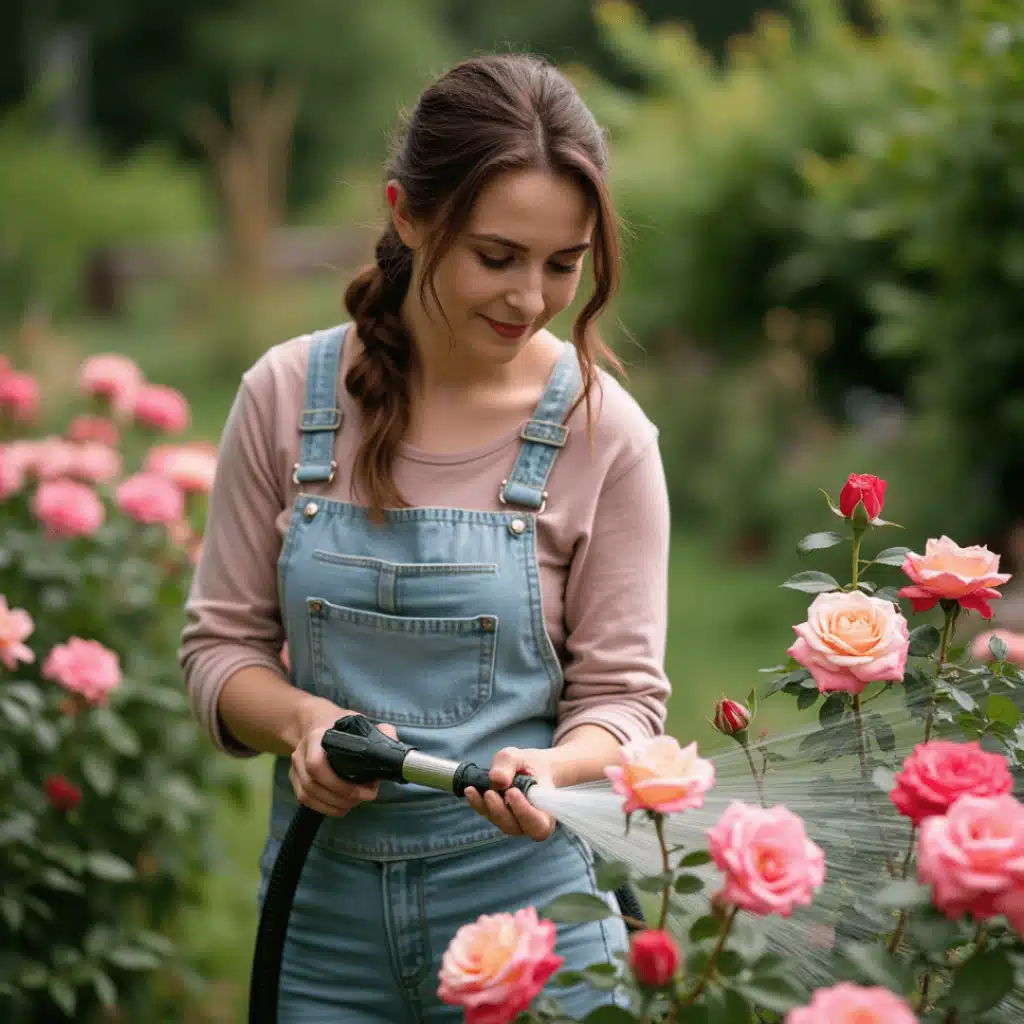
- Watering Frequency : Water deeply 1–2 times per week, depending on weather.
- Avoid Overwatering : Too much water can cause root rot.
- Morning Watering : Water early in the day to prevent fungal diseases.
Mulching Benefits :
- Retains moisture, reduces weeds, and keeps soil cool.
- Apply 2–3 inches of organic mulch like wood chips or shredded leaves.
5. Pruning and Shaping Roses
Pruning promotes strong growth, better air circulation, and more blooms.
- Spring Pruning : Remove dead, weak, or crossing branches.
- Summer Maintenance : Trim back spent blooms (deadheading) to encourage continuous flowering.
- Winter Protection : Prune lightly before winter dormancy in colder regions.
Pro Tip : Always use sharp pruning shears to make clean cuts and prevent disease.
6. Dealing with Pests and Diseases
Roses can attract pests and fungal infections, but proper care keeps them healthy.
- Aphids : Treat infestations by spraying plants with a mixture of water and dish soap.
- Black Spot : Improve air circulation and apply organic fungicides if needed.
- Powdery Mildew : Reduce humidity around plants and avoid overhead watering.
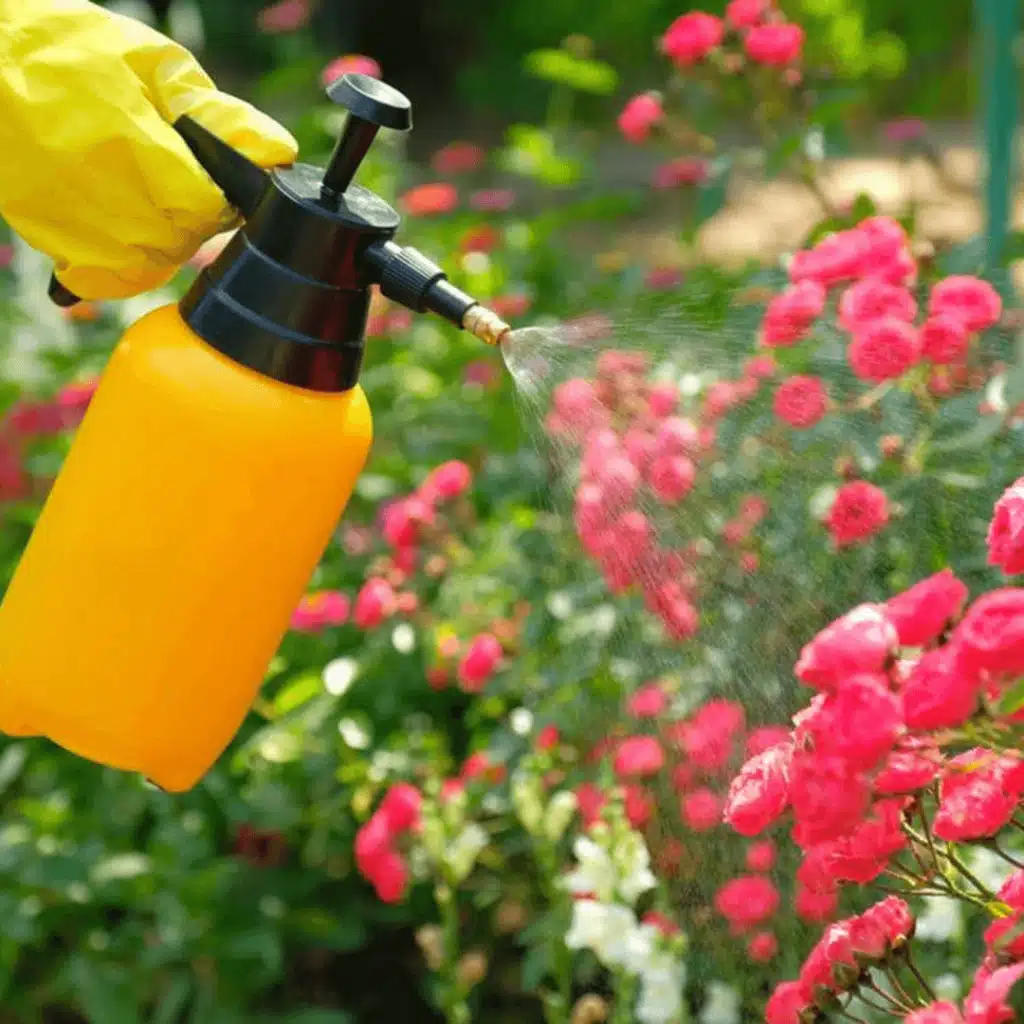
For natural pest control, introduce ladybugs or use neem oil spray.
7. Fertilizing Roses for Maximum Blooms
To ensure vibrant flowers, feed your roses regularly:
- Early Spring : Apply a balanced rose fertilizer when new growth appears.
- Midseason Boost : Use organic compost tea or fish emulsion for strong blooms.
- Late Summer : Light feeding helps prepare the plant for winter.
Avoid over-fertilizing, as it can result in excessive foliage with fewer flowers.
8. Winterizing and Protecting Roses
Cold weather can damage rose bushes, so take precautions :
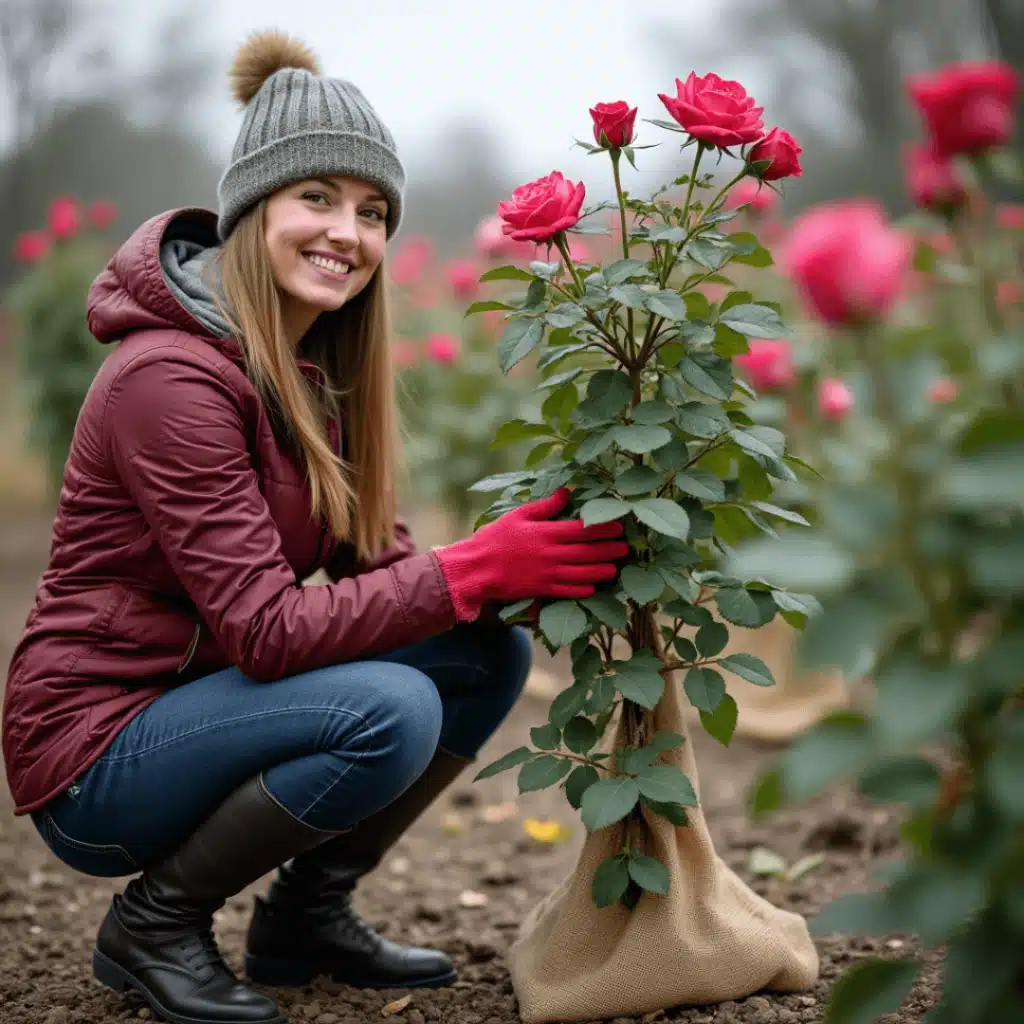
- Mulch Heavily : Apply extra mulch around the roots for insulation.
- Use Covers : Protect tender varieties with burlap or rose cones.
- Minimal Pruning : Avoid heavy pruning before winter—wait until spring.
FAQs About Growing Roses
- How often should I water my roses?
Water deeply once or twice a week, depending on rainfall and soil drainage. - Do roses need full sun?
Yes, roses need at least 6–8 hours of direct sunlight per day. - What’s the best fertilizer for roses?
Use a balanced fertilizer formulated for roses or apply compost and organic feeds. - How do I keep my roses disease-free?
Ensure proper airflow, avoid wet foliage, and remove diseased leaves immediately.
Conclusion
Growing roses may seem challenging at first, but with proper care, even beginners can cultivate stunning, fragrant blooms. By selecting the right variety, preparing the soil, and following basic maintenance practices, you’ll enjoy a thriving rose garden for years to come.
So why not plant your first rose bush today? Your garden will soon be filled with the beauty and charm of flourishing roses! 🌹

